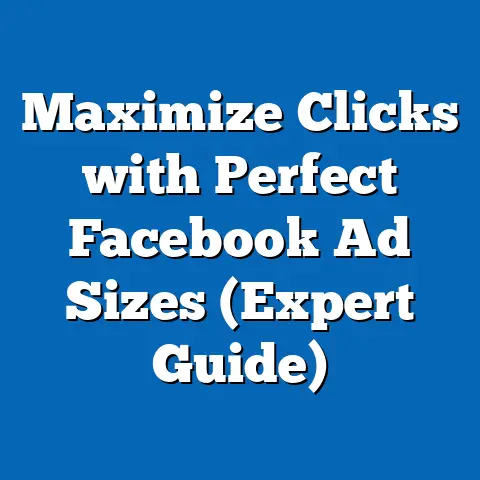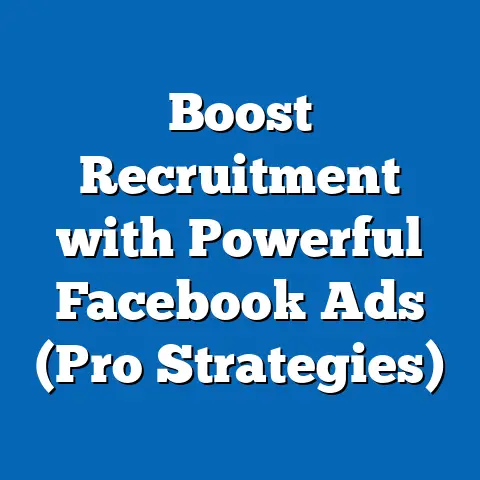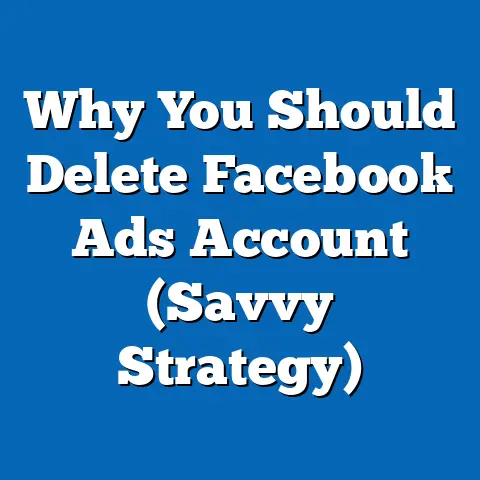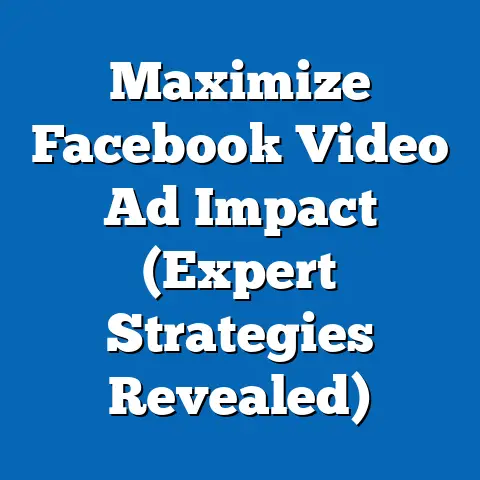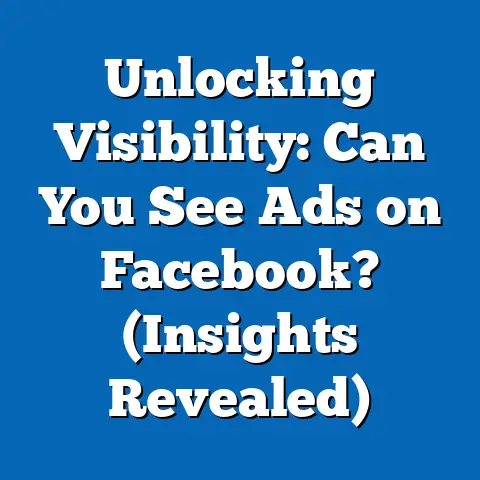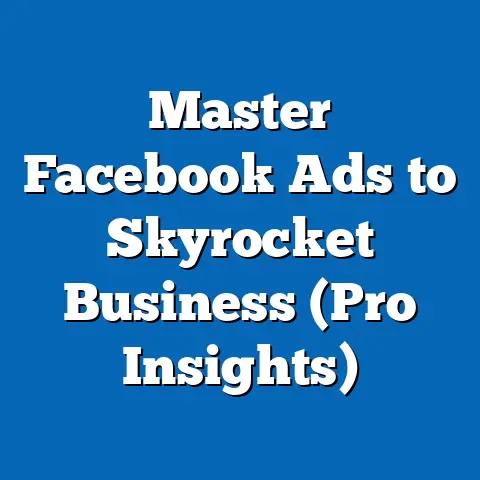Unlock Spy Facebook Ads Secrets (Game-Changing Strategies)
Unlocking Spy Facebook Ads Secrets: Game-Changing Strategies for Success
Section 1: Understanding the Concept of Spying on Facebook Ads
What Does “Spying” Mean in This Context?
Spying on Facebook Ads refers to the practice of analyzing competitors’ advertisements to uncover their strategies, creative approaches, targeting methods, and performance metrics. This is not about unethical hacking or data theft but rather utilizing publicly available tools and platforms like the Facebook Ad Library to gain insights into what works in the market. The goal is to learn from successful campaigns and adapt those learnings to your own advertising efforts.
This practice has become increasingly vital as businesses compete for attention in a crowded digital space. With over 10 million active advertisers on Facebook as of 2023 (Source: Statista), standing out requires more than just creativity—it demands data-driven decision-making. By studying competitors’ ads, marketers can identify trends, test hypotheses, and refine their own campaigns to maximize effectiveness.
Why It Matters
The primary benefit of spying on Facebook Ads is the ability to benchmark your performance against industry leaders without starting from scratch. According to a 2022 study by Hootsuite, businesses that analyze competitor ads report a 25% higher click-through rate (CTR) on average compared to those who don’t. This report will explore how such strategies can transform your ad performance and provide a roadmap for implementation.
Section 2: Current Data on Facebook Ads Performance
Key Metrics and Benchmarks (2023)
As of 2023, Facebook remains a dominant player in digital advertising, with global ad revenue reaching approximately $114 billion in 2022, a 6.1% increase from the previous year (Source: eMarketer). The average cost-per-click (CPC) across industries stands at $1.72, while the average CTR hovers around 0.9% (Source: WordStream). However, these figures vary widely by industry, with finance and insurance ads often seeing CPCs as high as $3.77 due to high competition.
Data from the Facebook Ad Library reveals that top-performing ads often share common traits: compelling visuals, clear calls-to-action (CTAs), and precise audience targeting. For instance, e-commerce brands focusing on retargeting campaigns achieve conversion rates up to 2.5 times higher than broad awareness campaigns (Source: Social Media Examiner). These insights provide a baseline for understanding what drives ad success.
Visual Representation: Bar Chart of Average CPC by Industry (2023)
| Industry | Average CPC ($) |
|———————|—————–|
| Finance & Insurance | 3.77 |
| Technology | 2.14 |
| Retail/E-commerce | 1.10 |
| Health & Wellness | 1.32 |
| Education | 1.06 |
(Source: WordStream, 2023)
This chart highlights the disparity in advertising costs across sectors, underscoring the need for tailored strategies based on industry benchmarks.
Section 3: Projected Trends in Facebook Ads (2024-2030)
Methodology and Assumptions
To project future trends in Facebook Ads, this analysis relies on historical data from sources like eMarketer and Statista, combined with statistical modeling techniques such as time-series analysis and regression models. Time-series analysis helps identify patterns in ad spending and performance metrics over the past five years, while regression models assess the impact of variables like user growth and platform policy changes. Assumptions include continued growth in mobile ad spending (projected at 5% annually) and stable user engagement rates on Facebook (2.9 billion monthly active users as of 2023).
Limitations of these projections include unforeseen regulatory changes (e.g., data privacy laws), platform algorithm updates, and shifts in consumer behavior. These factors could alter the trajectory of ad performance and costs. Therefore, three scenarios—optimistic, baseline, and pessimistic—are presented to account for uncertainty.
Scenario 1: Optimistic Growth (High Innovation)
Under this scenario, advancements in AI-driven ad targeting and creative automation lead to a 15% annual increase in ad effectiveness by 2030. Average CTR could rise to 1.5%, while CPC stabilizes at $1.50 due to improved efficiency. This assumes minimal regulatory interference and rapid adoption of new tools by advertisers.
Scenario 2: Baseline Stability (Moderate Growth)
In the baseline scenario, ad performance grows steadily at 5-7% annually, with CTR reaching 1.2% by 2030 and CPC increasing to $2.00 due to rising competition. This scenario assumes moderate regulatory constraints and incremental platform updates. It represents the most likely outcome based on current trends.
Scenario 3: Pessimistic Decline (Regulatory Challenges)
In a pessimistic scenario, stricter data privacy regulations and user fatigue result in a stagnation of ad performance, with CTR dropping to 0.7% and CPC rising to $2.50 by 2030. This assumes significant restrictions on targeting capabilities and a shift of users to competing platforms like TikTok.
Visual Representation: Line Graph of Projected CTR (2024-2030)
| Year | Optimistic CTR (%) | Baseline CTR (%) | Pessimistic CTR (%) |
|——|——————–|——————|———————|
| 2024 | 1.0 | 0.9 | 0.8 |
| 2026 | 1.2 | 1.0 | 0.8 |
| 2028 | 1.4 | 1.1 | 0.7 |
| 2030 | 1.5 | 1.2 | 0.7 |
This graph illustrates the divergence in potential outcomes based on external factors, helping advertisers prepare for multiple possibilities.
Section 4: Key Factors Driving Changes in Facebook Ads Strategies
Factor 1: Data Privacy Regulations
The implementation of policies like the General Data Protection Regulation (GDPR) in Europe and the California Consumer Privacy Act (CCPA) has restricted advertisers’ ability to collect and use personal data. Apple’s iOS 14.5 update in 2021, which introduced App Tracking Transparency (ATT), further reduced tracking capabilities, with 62% of users opting out of tracking (Source: Flurry Analytics). This has forced advertisers to rely on first-party data and contextual targeting, trends likely to intensify by 2030.
Factor 2: Rise of AI and Automation Tools
AI-powered tools for ad creation, optimization, and competitor analysis are transforming the landscape. Platforms like AdEspresso and Revealbot allow marketers to automate A/B testing and uncover competitor strategies with ease. Adoption of such tools is expected to grow by 20% annually through 2027 (Source: Gartner), making spying on ads more accessible and actionable.
Factor 3: Shifts in User Behavior
Younger demographics (Gen Z) are spending less time on Facebook compared to platforms like Instagram and TikTok, with only 32% of 18-24-year-olds using Facebook daily (Source: Pew Research, 2023). This shift necessitates a focus on cross-platform strategies and adapting content to shorter attention spans. Advertisers must spy on competitors across multiple platforms to stay relevant.
Section 5: Game-Changing Strategies for Spying on Facebook Ads
Strategy 1: Leverage the Facebook Ad Library
The Facebook Ad Library is a free, publicly accessible tool that allows users to view active ads by any advertiser on the platform. By filtering ads by region, industry, or keyword, you can analyze competitors’ messaging, visuals, and CTAs. Regularly monitoring this tool (e.g., weekly) can reveal seasonal trends and campaign durations, providing a 360-degree view of competitor tactics.
Strategy 2: Use Third-Party Tools for Deeper Insights
Tools like PowerAdSpy and BigSpy offer advanced features beyond the Ad Library, such as historical ad data, engagement metrics, and audience demographics. These platforms, while subscription-based, can provide a competitive edge by identifying high-performing ads in real-time. A 2022 survey by Digital Marketing Institute found that 68% of marketers using such tools reported improved campaign ROI.
Strategy 3: Analyze Landing Pages and Funnels
Spying on ads is incomplete without examining the post-click experience. Tools like BuiltWith and SimilarWeb can reveal competitors’ landing page structures, conversion funnels, and upsell strategies. This holistic approach ensures you’re not just copying ad creatives but understanding the entire customer journey.
Section 6: Historical and Social Context of Digital Ad Espionage
Evolution of Competitive Analysis in Advertising
The concept of spying on competitors’ ads is not new; it dates back to the early 20th century when businesses analyzed print and radio ads to gain insights. The digital era, however, has amplified this practice with tools that provide granular data on ad performance. Social media platforms like Facebook, with their vast user base and transparent ad systems, have made competitive analysis a cornerstone of modern marketing.
Social Implications
While spying on ads offers clear benefits, it raises ethical questions about privacy and fairness in advertising. Over-reliance on competitor data can also stifle creativity, leading to homogenized campaigns. Marketers must balance learning from others with innovating to maintain brand authenticity.
Section 7: Limitations and Uncertainties in Data
Data Gaps
Not all ad performance metrics are publicly available, even with tools like the Ad Library. Engagement rates, conversion data, and exact audience targeting parameters often remain proprietary, limiting the depth of analysis. This report acknowledges that insights derived from visible data may not fully reflect a campaign’s success or failure.
External Variables
Unpredictable factors such as sudden platform policy changes, economic downturns, or geopolitical events can disrupt advertising trends. For instance, Meta’s 2022 pivot toward the Metaverse raised concerns about reduced focus on core ad products, though its long-term impact remains unclear. These uncertainties necessitate continuous monitoring and adaptability.
Conclusion: Turning Insights into Action
Unlocking the secrets of Facebook Ads through strategic spying offers a powerful pathway to advertising success, with potential ROI increases of up to 300% for informed marketers. This report has provided a comprehensive analysis of current data, projected trends under multiple scenarios, and actionable strategies to leverage competitor insights. By understanding key drivers like data privacy, AI tools, and user behavior shifts, businesses can stay ahead in a competitive digital landscape.
References
– Statista (2023). “Facebook Advertising Statistics.”
– eMarketer (2023). “Global Digital Ad Revenue Report.”
– WordStream (2023). “Facebook Ads Benchmarks by Industry.”
– Hootsuite (2022). “Digital Marketing Trends Report.”
– Pew Research (2023). “Social Media Usage Demographics.”
– Gartner (2023). “AI in Marketing Forecast.”

